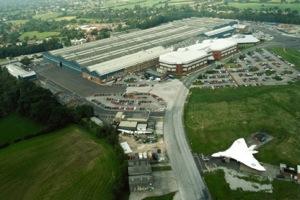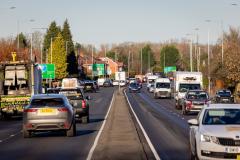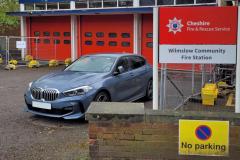
Stockport Council's Executive has approved a Supplementary Planning Document (SPD) for the redevelopment of Woodford Aerodrome.
The SPD will now be adopted as part of Stockport's Local Development Framework and will provide guidance for the future development of the former BAE Systems site - which means up to 850 homes could be built there.
More than 700 comments were received on the draft SPD.
Councillor Iain Roberts, Executive Member for Economic Development and Regeneration at Stockport Council, said: "I'd like to thank everyone who commented on the SPD, including the hundreds of Woodford residents who had their say.
"The Woodford Aerodrome Supplementary Planning Document interprets existing planning policy and will provide further guidance to developers. Next steps are likely to include the landowners making a planning application - we're looking forward to seeing how the vision laid out in the SPD is reflected in this."
Stockport Council published revised plans for the Woodford Aerodrome site towards the end of last year, which reduced the number of proposed homes from 950 to between 750 and 850.
The initial proposal was to create a garden village community of 950 houses by merging the two existing Major Existing Developed Sites. This was replaced with three options which would deliver between 750 and 850 houses.
For more information visit www.stockport.gov.uk/woodfordaerodrome.










Comments
Here's what readers have had to say so far. Why not add your thoughts below.
London has such airfields as Biggin Hill, White Waltham, Denham, Fairoaks and more to cater for this market while Heathrow and Gatwick handle the big jets. We have Manchester and Liverpool for airline traffic, and only Barton for anything else. Barton is grass, very short, very muddy in Winter and suffers frequent flooding (it was closed most of December!). It's quite unsuitable as a business and General Aviation airport.
I know south-east based businessmen who use air travel to further their business interests, but miss out this area of the UK because of its lack of aviation facilities.
At Woodford there is an infrastructure in place that would cost many millions to build, in the form of runways, approach aids, lighting, control tower etc. Just what the area needs! And we are going to demolish it all and turn it into another housing development!
I can't help thinking there's a certain lazy inevitability, short term greed, and lack of vision being demonstrated here!
Indeed, a few select houses could have personal a/c hangers attached, as per a well-known US housing development.
I took my PPL at Kirmington, a disused WW2 bomber base in Lincolnshire, thanks to a visionary who established a flying school from a portakabin. Kirmington is now Humberside airport.
Many airfields provide both amenity and economic benefit to the area they serve. Typically a mix of air traffic (light General Aviation, business aviation, flying training etc) is supported by service companies, some high tech with skilled workers. Alongside this they will host a range of commercial property which provides more economic benefit and then folk come to watch the aeroplanes, get involved in events hosted at the field and so on.
Typically housing does not generate long term economic benefit in this way as many people who live in the houses work and shop somewhere else and as more shopping moves on line this differential is getting worse; that is exacerbated by the demand for costly things like infrastructure, schools, social care etc.
Housing is a necessary evil, airfields are generally beneficial, but try telling a local councillor or planning officer that!